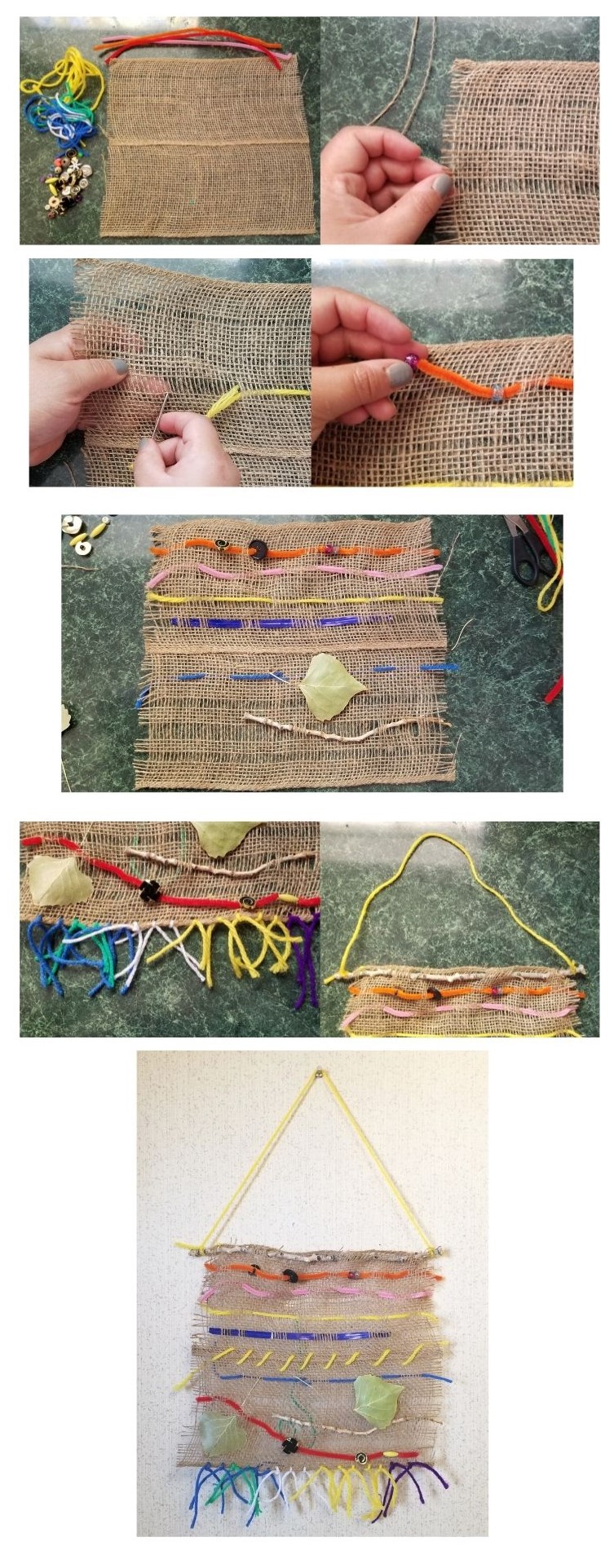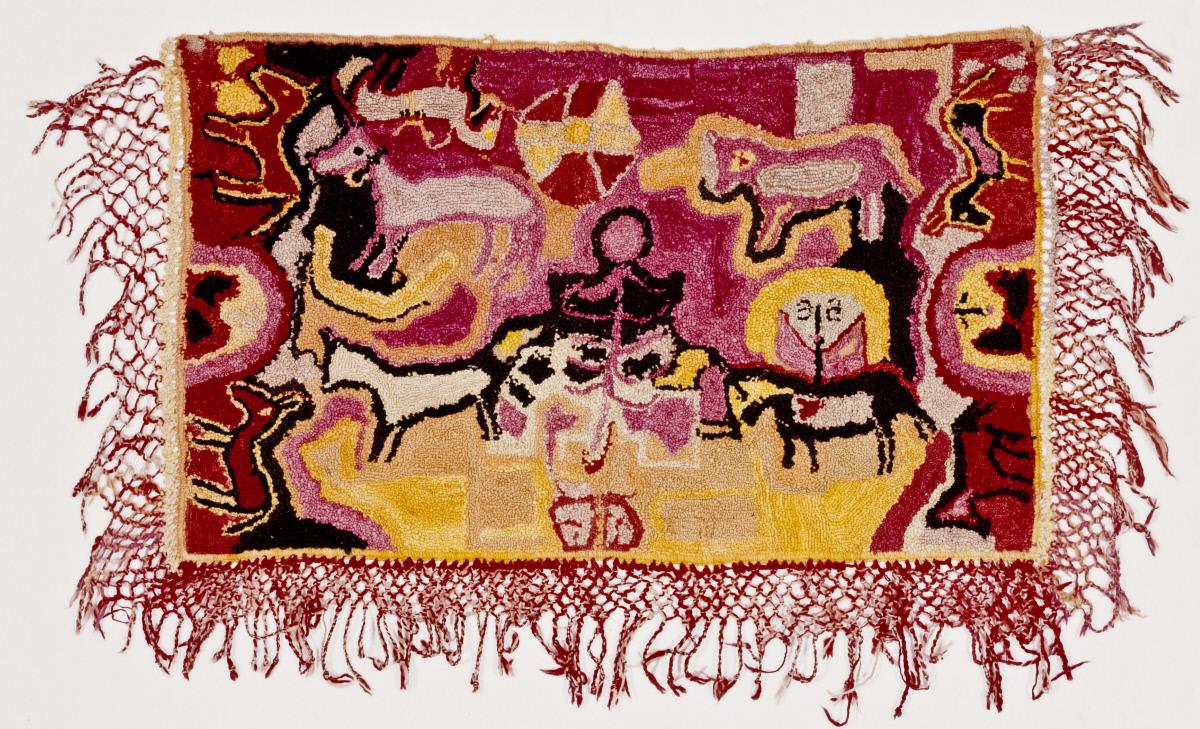DIY Woven Wall Hanging
Appropriate for grades:
Subject areas: Visual and Performing Arts
“In and Out, In and Out” goes the thread weaving through the warp strings. This special thread, the weft, goes “Over and Under” to the end and back again for another line. Most fabric today is woven, but the majority of fabrics are woven by a machine. Some very special fabrics, blankets, and rugs are still woven by hand. They are woven on 3 different kinds of looms. There is a standing or horizontal loom that you can stand or sit at while weaving. There is a vertical loom that you can sit at or stand over and look down at your weaving. There is also the backstrap or tension loom that actually ties around you when you weave. The Guatemalan highlands are known for their beautiful and colorful weavings; in the Middle East including Turkey, Pakistan, Iran, and India, weavers are known for their intricate rugs; and here in the US the Navajo are known for their woven blankets and rugs. Some weavings have beautiful and complicated patterns woven into them, others are plain and have decoration or embroidery added later.
What will you weave into your wall hanging?
You'll need
- burlap (loose weave) or grocery mesh sack
- yarn &/or ribbon
- pipe cleaners
- beads & buttons
- scissors
- wooden dowel or long twig
Optional: plastic blunt needle
Procedures 
- Cut a piece of burlap to the size you want for your wall hanging.
- You can loosen the weave of the burlap by pulling out horizontal threads. Leave at least three horizontal strands together between open areas.
- Weave pieces of yarn, ribbon, pipe cleaners, long twisty ties, twigs, etc., in and out of the burlap threads. Stop in areas to add buttons, beads and whatever you have on hand, to make an interesting design. (Use a plastic blunt needle to weavethe yarn and stitch any other designs.)
- Make small tassels along the bottom edge by tyingpieces of yarn or ribbon.
- Weave the wooden dowel or twig along the top edge of the wall hanging. (If available, use hot glue gun to attach the dowel.)
- Tie a string of yarn to either side of the dowel or twig, and hang your wall hanging.
